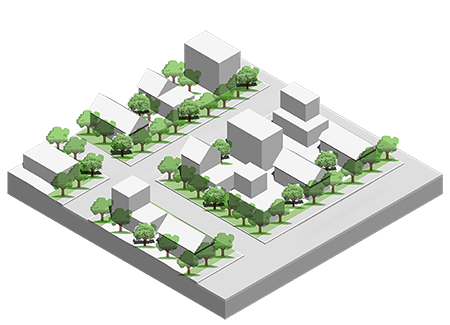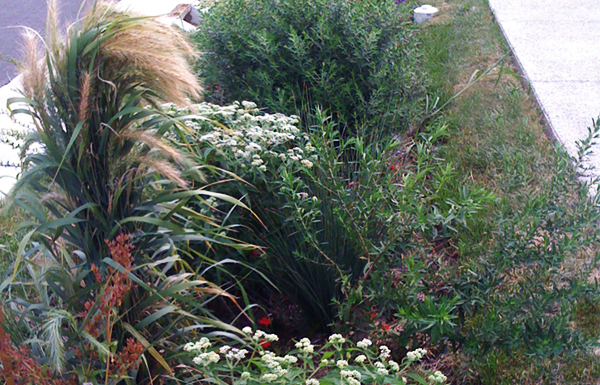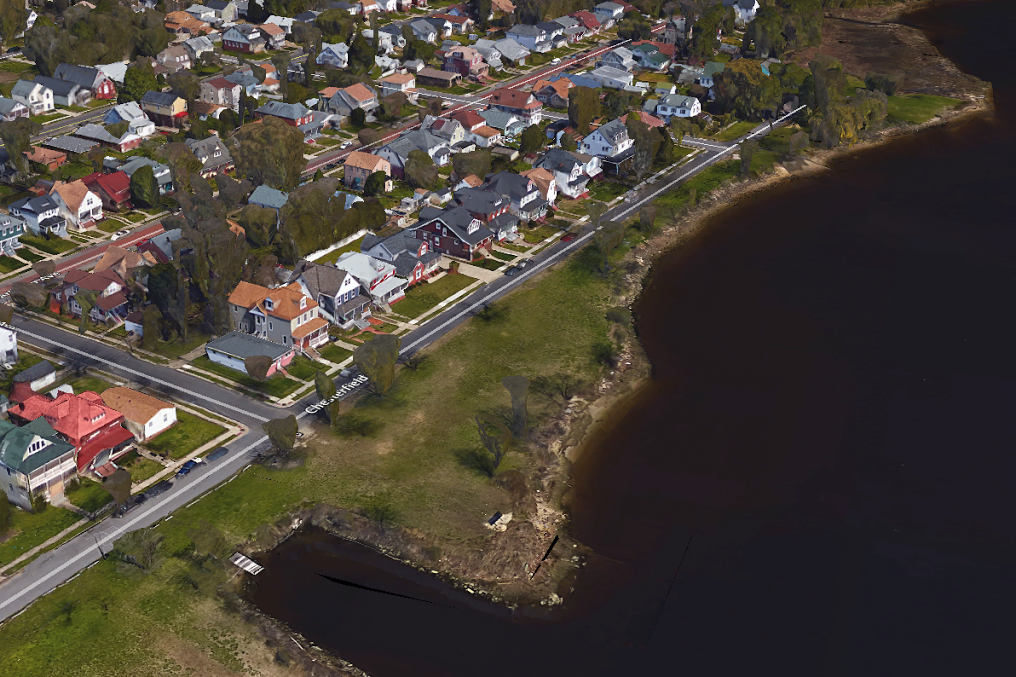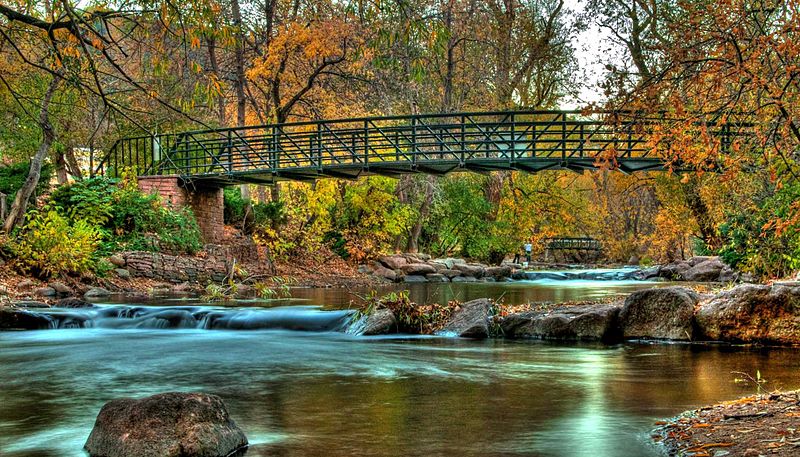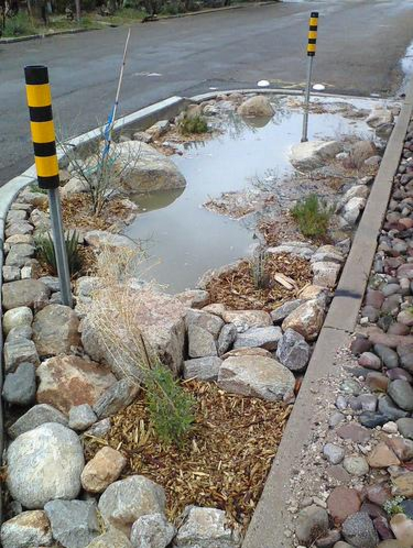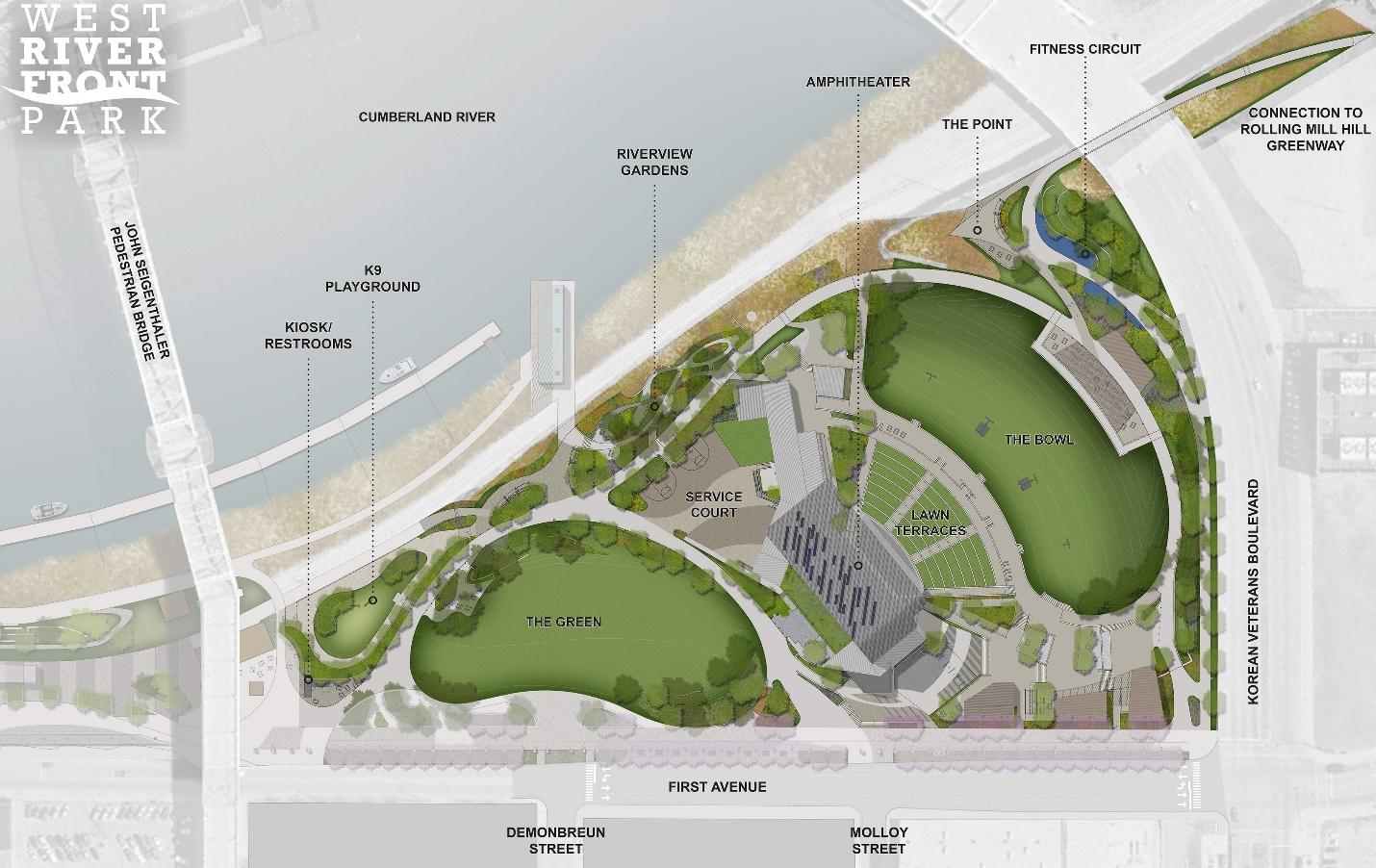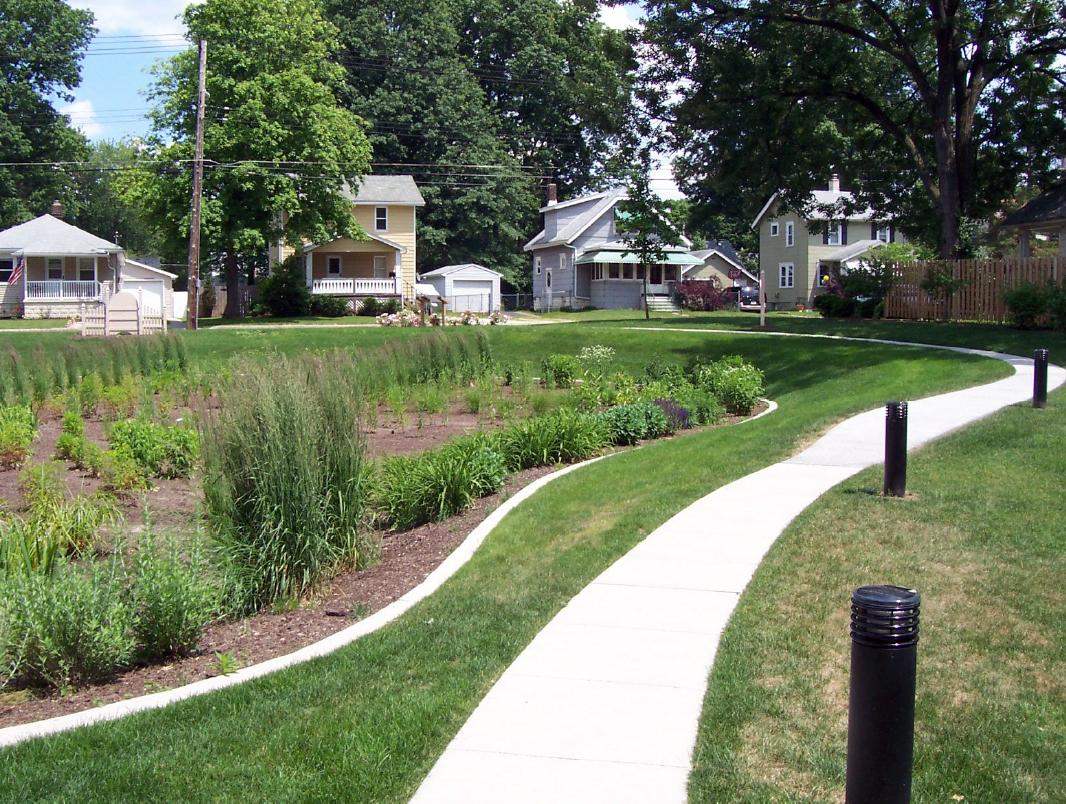Green Streets
Green streets incorporate depressed planted areas, typically located between the roadway pavement and the sidewalk, into the overall design of the street. The planted areas are aesthetically pleasing and are visually similar to a planter box within or adjacent to a roadway. Green streets may be incorporated into new road construction and retrofit applications and may be designed to complement a wide range of streetscape appearances, from semi-rural to an urban central business district. They frequently incorporate complementary natural infrastructure solutions such as trees, bioswales and rain gardens.
Hazard Mitigation
Green streets reduce and control the flow of stormwater directly at the source, from the nearby roadway, by collecting runoff in the intentionally designed planted areas so that it can be slowed down and absorbed before it is transmitted to the larger stormwater management system.

Siting Considerations
Plantings must be capable of tolerating dry conditions in the summer as well as occasional inundations. Ideally, the plants will be evergreen (for year-round aesthetic sensibility) and be low-growing plants (to maintain traffic visibility and driver sight distance) as well as plants which do not have deep roots (to avoid underground utility conflicts).
Design should be sensitive to the needs of the surrounding area (stormwater planters can accommodate on-street parking, while curb extensions can enhance pedestrian safety). Lined planters may be installed at locations with poor infiltration with lining (which prevents infiltration but still reduces peak flows).
Low to moderate slopes are necessary for installation of planted areas and underground utility conflicts must be avoided. Sites must have sufficient width to accommodate the planted areas as well as adequate space along the length of the right of way for the runoff to divert into the intended planted area (as water running downhill is reluctant to make 90-degree turns).
Costs
Costs will vary greatly depending on the size and nature of the selected green street improvements. Extensive hardscaping and elaborate landscaping will drive up costs, but these may be reduced if the improvements are undertaken as part of a scheduled street improvement. For reference, in 2005, the City of Portland installed four stormwater planters (totaling 640 square feet of project area) with extensive hardscaping at a cost of $55 per square foot.

Co-Benefits of the Strategy
The environmental impact of green streets includes improved water quality (through the removal of pollutants), replenished groundwater supplies, improved air quality, and reduced urban heat island effect. The air quality and heat reduction in turn lead to health co-benefits, which are supplemented by the traffic calming (and resulting improvements in pedestrian and bicycle safety) created by curb extensions.
There are also economic benefits in a reduced need for expensive, traditional gray stormwater infrastructure as well as improved property values created by the improved neighborhood aesthetics.
Maintenance Considerations
Planters must be maintained regularly (at least twice per year and after any major storm events) to weed, prune and replace plants, and remove sediment and debris. In cases where the planter boxes are new, maintenance may be required more often to ensure the plants grow properly to serve the intended function.

Similar or Complementary Solutions
The planters and curb extensions of green streets provide ample opportunities to incorporate street trees, bioswales, and rain gardens.
Additional Considerations
Other approaches for green streets include minimizing the total amount of impervious area by using narrower street widths. Permeable paving may also be incorporated into green streets.
Additional Information
The EPA created guidance specifically focused on assisting municipalities with the design and implementation of green streets.
The City of Portland’s (Oregon) Bureau of Environmental Services produced a very detailed write-up on the concept of green streets as well as a description of the SW 12th Avenue green street project, covering site selection, design, costs, and maintenance information.
